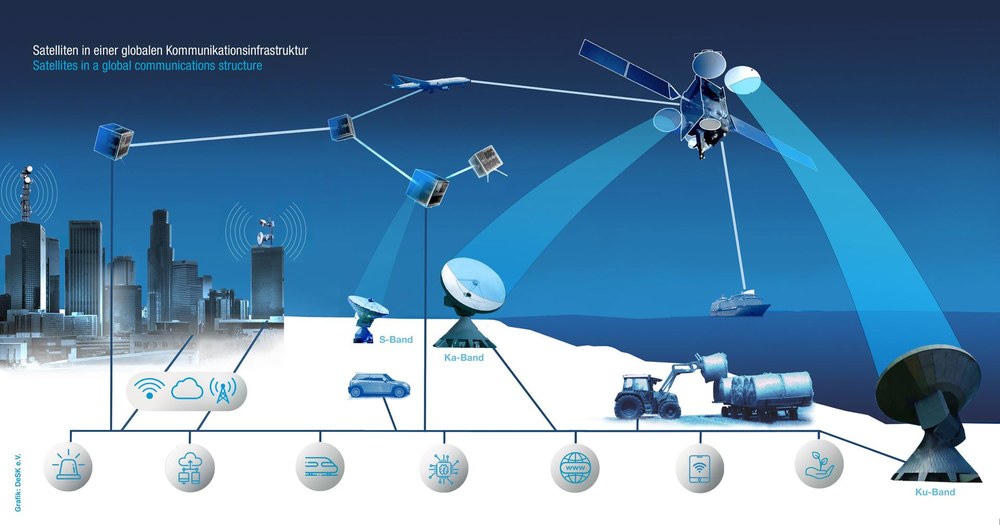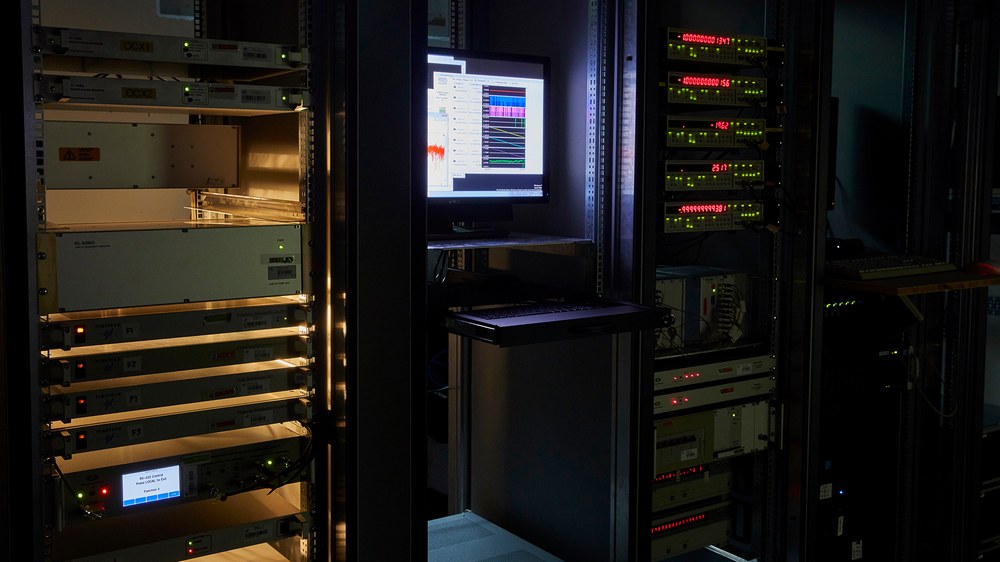System Evolution Group
The working group “System Evolution” focuses on analyzing novel technologies and methods for advancing the provision of navigation and timing services.
In recent years, key enabling technologies have emerged that could improve positioning and timing services, such as optical frequency references based on stabilized lasers, femtosecond optical frequency combs, space-qualified optical terminals for inter-satellite ranging, time transfer, and high throughput communications. We study to what extent these technologies will improve satellite navigation systems in terms of accuracy, autonomy and integrity.
In den letzten Jahren wurden Schlüsseltechnologien entwickelt, wie z.B. optische Frequenzreferenzen, optische Frequenzkämme, und raumfahrt-qualifizierte Laser Communication Terminals für Inter-Satelliten Verbindung, die Positionierungs- und Zeitverteilung verbessern könnten. Wir untersuchen, inwieweit diese Technologien die Satellitennavigationssysteme in Bezug auf Genauigkeit, Autonomie und Integrität verbessern werden.
Future Global Navigation Satellite System Architectures with inter-linked satellites
Studies on revised system architectures are ongoing to determine potential evolutions of current satellite navigation concepts. We analyze how to establish networks of optically-linked satellites in medium earth orbit synchronized at ps-level, and the benefits of deploying complementary constellations of satellites in low earth orbit (LEO) for signal monitoring, intra-system communication, and/or additional broadcast of navigation signals (e.g. mega-LEO constellations concepts).
Robust Time Generation
Time generation and dissemination techniques also play an important role in modern navigation systems. We determine the statistical behavior of frequency references, study methods for generating a stable time reference, and devise techniques to guarantee the integrity of the processes underlying time scale generation. A Key activity is the development of mixed clock ensembles composed of both atomic and optical frequency references.
The group operates two laboratories equipped with state-of-the art atomic clocks (among which active hydrogen masers, rubidium clocks and cesium references) and experimental optical frequency references (e.g. optical frequency combs locked to cavity-stabilized lasers).
Die Gruppe betreibt zurzeit zwei Laboratorien, die mit modernsten Atomuhren (darunter aktive Wasserstoff-Maser, Rubidiumuhren und Cäsiumreferenzen) und experimentellen optischen Frequenzreferenzen (z.B. optische Frequenzkämme, die an kavitätsstabilisierten Lasern befestigt sind) ausgestattet sind.
Current activitiesAktivitäten
The system evolution group is currently engaged in the following activities
- Development of novel GNSS system and processing architectures concepts
- Qualification of optical atomic clocks in our Time Lab and Optical Atomic Clock Lab
- Generation of a time reference via mixed clock ensembles
- Algorithms for frequency/time transfer over a coherent optical channel
- Relativistic aspects in GNSS and inter-satellite links
- Analysis of satellite orbit dissemination methods
- System autonomy, system integrity and onboard integrity monitoring concepts
- Estimation of satellite biases
- Precise Point Positioning for current and future systems
Additionally, we support the activities of the APNT working group towards the development of alternative systems capable of providing navigation and timing services either in the absence of satellite navigation (unavailability) or to complement current GNSS services.


DeSK e.V.


